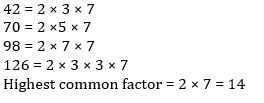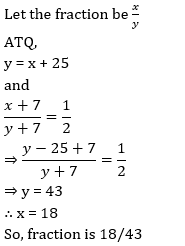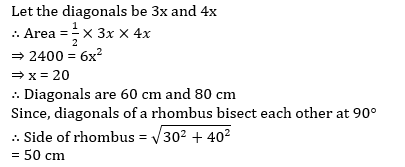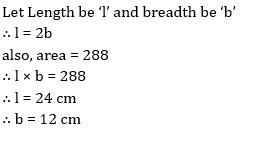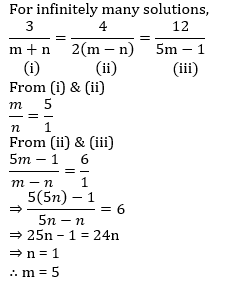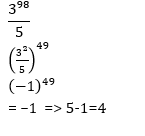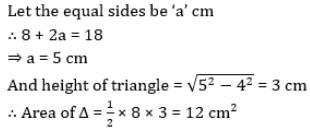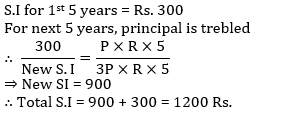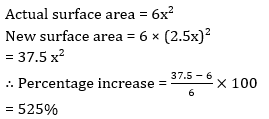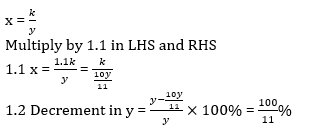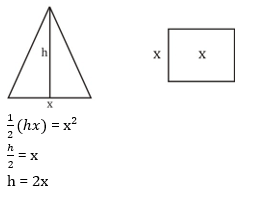All Exams >
CTET & State TET >
CTET (Central Teacher Eligibility Test) Mock Test Series 2025 >
All Questions
All questions of CTET Full Length Practice Test Paper 2 (Mathematics and Science) for CTET & State TET Exam
Which one of the following could be an end stage of a child possessing bodily-kinesthetic intelligence? - a)surgeon
- b)orator
- c)poet
- d)political leader
Correct answer is option 'A'. Can you explain this answer?
Which one of the following could be an end stage of a child possessing bodily-kinesthetic intelligence?
a)
surgeon
b)
orator
c)
poet
d)
political leader
|
|
Hridoy Joshi answered |
Bodily-kinesthetic intelligence is a type of intelligence that involves physical movement, coordination, and dexterity. Individuals with high bodily-kinesthetic intelligence have excellent motor skills and the ability to control their body movements with precision. They are natural athletes, dancers, and artisans, and they often excel in careers that require physical skill and coordination.
End stage of bodily-kinesthetic intelligence:
The end stage of bodily-kinesthetic intelligence is a career that requires a high level of physical skill and coordination. Some examples of careers that would be suitable for individuals with high bodily-kinesthetic intelligence include:
1. Surgeon: Surgeons require excellent hand-eye coordination and fine motor skills to perform delicate surgeries.
2. Athlete: Athletes require exceptional physical coordination and dexterity to perform at a high level in their sport.
3. Dancer: Dancers require precise control over their body movements and coordination to perform complex dance routines.
4. Artisan: Artisans such as sculptors, woodworkers, and metalworkers require excellent physical dexterity and coordination to create their works of art.
Conclusion:
In conclusion, the end stage of bodily-kinesthetic intelligence is a career that requires a high level of physical skill and coordination. A surgeon is an excellent example of a career that would be suitable for individuals with high bodily-kinesthetic intelligence because it requires excellent hand-eye coordination and fine motor skills.
End stage of bodily-kinesthetic intelligence:
The end stage of bodily-kinesthetic intelligence is a career that requires a high level of physical skill and coordination. Some examples of careers that would be suitable for individuals with high bodily-kinesthetic intelligence include:
1. Surgeon: Surgeons require excellent hand-eye coordination and fine motor skills to perform delicate surgeries.
2. Athlete: Athletes require exceptional physical coordination and dexterity to perform at a high level in their sport.
3. Dancer: Dancers require precise control over their body movements and coordination to perform complex dance routines.
4. Artisan: Artisans such as sculptors, woodworkers, and metalworkers require excellent physical dexterity and coordination to create their works of art.
Conclusion:
In conclusion, the end stage of bodily-kinesthetic intelligence is a career that requires a high level of physical skill and coordination. A surgeon is an excellent example of a career that would be suitable for individuals with high bodily-kinesthetic intelligence because it requires excellent hand-eye coordination and fine motor skills.
120 and above IQ is known as- a)Average
- b)Genius
- c)High
- d)None
Correct answer is option 'B'. Can you explain this answer?
120 and above IQ is known as
a)
Average
b)
Genius
c)
High
d)
None
|
|
Mujahid Alig answered |
If IQ is more than 120 it means Genius.
In Piaget’s theory of cognitive development, the language development starts from - a)Sensorimotor
- b)Pre-operational
- c)Concrete operational
- d)Formal operational
Correct answer is option 'B'. Can you explain this answer?
In Piaget’s theory of cognitive development, the language development starts from
a)
Sensorimotor
b)
Pre-operational
c)
Concrete operational
d)
Formal operational
|
|
Prashanth Verma answered |
's theory of cognitive development, children progress through four stages of development:
1. Sensorimotor stage (birth to 2 years): During this stage, infants learn about the world through their senses and motor actions. They begin to develop object permanence and learn to coordinate their movements to achieve goals.
2. Preoperational stage (2 to 7 years): In this stage, children begin to use language to represent objects and events in their environment. They develop symbolic thinking, but are still limited by egocentrism and lack of conservation.
3. Concrete operational stage (7 to 11 years): Children in this stage become more logical and organized in their thinking. They can perform mental operations on concrete objects and understand the concept of conservation.
4. Formal operational stage (11 years and up): During this stage, adolescents develop the ability to think abstractly and reason hypothetically. They can engage in deductive reasoning and understand complex ideas and concepts.
1. Sensorimotor stage (birth to 2 years): During this stage, infants learn about the world through their senses and motor actions. They begin to develop object permanence and learn to coordinate their movements to achieve goals.
2. Preoperational stage (2 to 7 years): In this stage, children begin to use language to represent objects and events in their environment. They develop symbolic thinking, but are still limited by egocentrism and lack of conservation.
3. Concrete operational stage (7 to 11 years): Children in this stage become more logical and organized in their thinking. They can perform mental operations on concrete objects and understand the concept of conservation.
4. Formal operational stage (11 years and up): During this stage, adolescents develop the ability to think abstractly and reason hypothetically. They can engage in deductive reasoning and understand complex ideas and concepts.
Motives which have a physiological basis, such as hunger, thirst & sleep are referred to as - a)Negative primary motives
- b)Negative Secondary motives
- c)Primary motives
- d)Secondary motives
Correct answer is option 'C'. Can you explain this answer?
Motives which have a physiological basis, such as hunger, thirst & sleep are referred to as
a)
Negative primary motives
b)
Negative Secondary motives
c)
Primary motives
d)
Secondary motives
|
|
Avlokit Maurya answered |
Yes,
It is clearly mentioned in the Maslow's Hierarchy of needs.
Where hunger, thirst and sleep are considered very close to our existence. Our mind knows that to exist in this life we need to survive with hunger, thirst and sleep which are our biological compulsions.
It is clearly mentioned in the Maslow's Hierarchy of needs.
Where hunger, thirst and sleep are considered very close to our existence. Our mind knows that to exist in this life we need to survive with hunger, thirst and sleep which are our biological compulsions.
निम्नलिखित गद्यांश को ध्यानपूर्वक पढ़िये तथा पूछे गए प्रश्नों के लिए सही उत्तर वाले विकल्प का चयन कीजिए –व्यक्ति की पहचान उसकी भाषा से होती है और भाषा संस्कार से बनती है। जिनके जैसे संस्कार होंगे, वैसी ही उसकी भाषा होगी। जब कोई आदमी भाषा बोलता है तो साथ में उसके संस्कार भी बोलते हैं। यही कारण है कि भाषा शिक्षक का दायित्व बहुत गुरोत्तर और चुनौतीपूर्ण है। परम्परागत रूप में शिक्षक की भूमिका इन तीन कौशलोंबोलना, पढ़ना और लिखना तक सीमित कर दी गई है। केवल यांत्रिक कौशल किसी जीती जागती भाषा का उदाहरण नहीं हो सकते है। सोचना और महसूस करना दो ऐसे कारक हैं जिनसे भाषा सही आकार पाती है। इसके बिना भाषा गूँगी एवं बहरी है, इनके बिना भाषा संस्कार नहीं बन सकती, इनके बिना भाषा युगोंयुगों का लम्बा सफर नहीं तय कर सकती; इनके बिना कोई भाषा किसी देश या समाज की धड़कन नहीं बन सकती। केवल सम्प्रेषण ही भाषा नहीं है। दर्द और मुस्कान के बिना कोई भाषा जीवन्त नहीं हो सकती।Q. व्यक्ति की पहचान किससे होती है? - a)उसकी भाषा से
- b)उसके पहनावे से
- c)उसके खान पान से
- d)उसकी शिक्षा से।
Correct answer is option 'A'. Can you explain this answer?
निम्नलिखित गद्यांश को ध्यानपूर्वक पढ़िये तथा पूछे गए प्रश्नों के लिए सही उत्तर वाले विकल्प का चयन कीजिए –
व्यक्ति की पहचान उसकी भाषा से होती है और भाषा संस्कार से बनती है। जिनके जैसे संस्कार होंगे, वैसी ही उसकी भाषा होगी। जब कोई आदमी भाषा बोलता है तो साथ में उसके संस्कार भी बोलते हैं। यही कारण है कि भाषा शिक्षक का दायित्व बहुत गुरोत्तर और चुनौतीपूर्ण है। परम्परागत रूप में शिक्षक की भूमिका इन तीन कौशलोंबोलना, पढ़ना और लिखना तक सीमित कर दी गई है। केवल यांत्रिक कौशल किसी जीती जागती भाषा का उदाहरण नहीं हो सकते है। सोचना और महसूस करना दो ऐसे कारक हैं जिनसे भाषा सही आकार पाती है। इसके बिना भाषा गूँगी एवं बहरी है, इनके बिना भाषा संस्कार नहीं बन सकती, इनके बिना भाषा युगोंयुगों का लम्बा सफर नहीं तय कर सकती; इनके बिना कोई भाषा किसी देश या समाज की धड़कन नहीं बन सकती। केवल सम्प्रेषण ही भाषा नहीं है। दर्द और मुस्कान के बिना कोई भाषा जीवन्त नहीं हो सकती।
Q. व्यक्ति की पहचान किससे होती है?
a)
उसकी भाषा से
b)
उसके पहनावे से
c)
उसके खान पान से
d)
उसकी शिक्षा से।
|
|
Rani Kumari answered |
भाषा हमे यह बताती है कि कोई व्यक्ति कहा पर पला-बडा है जैसे कि अगर कोई व्यक्ति भारत जैसे देश में रहता है तो वह व्यक्ति हिन्दी, गुजराती, मराठी और पंजाबी या अन्य भाषायें बोलगा।लेकिन अगर कोई व्यक्ति चीन में रहता होगा तो वह चाइनीज बोलेगा ।इससे यह पता चलता है कि कोई व्यक्ति कहा पर पला-बडा है हम जैसे परिवेश में रहते हैं वैसे ही बन जाते हैं और वही संस्कृति सीख जाते है । हमारे विकास पर परवरिश और परिवेश दोनों का प्रभाव पडता है ।
Who gave the Lange Theory of Emotion? - a)James
- b)Cannon
- c)Schachter
- d)Watson
Correct answer is option 'A'. Can you explain this answer?
Who gave the Lange Theory of Emotion?
a)
James
b)
Cannon
c)
Schachter
d)
Watson
|
|
Disha Saini answered |
Yes James is correct answer because in 1841 he gave the Lange theory of Emotion..
In a club, 25 members are not adults; 30 members are adults but less than 30 years of age; and 20 members are above 30 years of age. The ratio of number of adults to the total number of members is - a)3 : 2
- b)2 : 3
- c)5 : 3
- d)3 : 5
Correct answer is option 'B'. Can you explain this answer?
In a club, 25 members are not adults; 30 members are adults but less than 30 years of age; and 20 members are above 30 years of age. The ratio of number of adults to the total number of members is
a)
3 : 2
b)
2 : 3
c)
5 : 3
d)
3 : 5
|
|
Akshay Ghoshal answered |
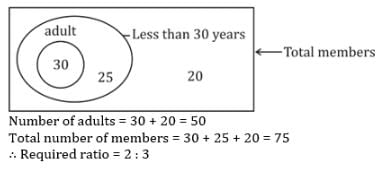
A consignment consists of 2 bags containing 95 balls each. The shopkeeper pays Rs. 2812 for the consignment. Another shopkeeper receives a consignment of same type of balls for which he pays Rs. 1776. The number of dozens of balls in the consignment is - a)120
- b)240
- c)10
- d)20
Correct answer is option 'C'. Can you explain this answer?
A consignment consists of 2 bags containing 95 balls each. The shopkeeper pays Rs. 2812 for the consignment. Another shopkeeper receives a consignment of same type of balls for which he pays Rs. 1776. The number of dozens of balls in the consignment is
a)
120
b)
240
c)
10
d)
20
|
|
Sravya Desai answered |
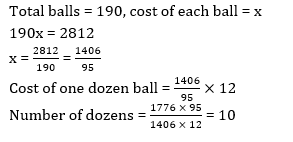
A solid is in the form of a right circular cone mounted on a hemisphere. The radius of the hemisphere is 2.1 cm and height of the cone is 4 cm. The solid is placed in a cylindrical tube full of water in such a way that the whole solid is submerged in water. If the radius of the cylinder is 5 cm and height is 9.8 cm. The volume of the water left in tub is - a)732.116 cm3
- b)730.116 cm3
- c)716.116 cm3
- d)712.12 cm3
Correct answer is option 'A'. Can you explain this answer?
A solid is in the form of a right circular cone mounted on a hemisphere. The radius of the hemisphere is 2.1 cm and height of the cone is 4 cm. The solid is placed in a cylindrical tube full of water in such a way that the whole solid is submerged in water. If the radius of the cylinder is 5 cm and height is 9.8 cm. The volume of the water left in tub is
a)
732.116 cm3
b)
730.116 cm3
c)
716.116 cm3
d)
712.12 cm3
|
|
Rajat Nair answered |
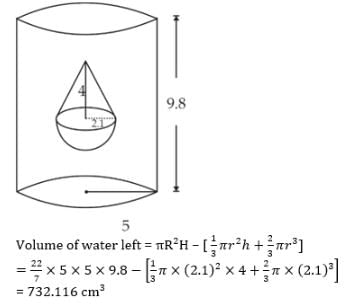
The frequency of an object is 200 Hz. If the velocity of sound in air is 340 m/s, the wavelength of the sound produced is - a)1.7 cm.
- b)6.8 cm.
- c)1.9 cm.
- d)6.9 cm.
Correct answer is option 'C'. Can you explain this answer?
The frequency of an object is 200 Hz. If the velocity of sound in air is 340 m/s, the wavelength of the sound produced is
a)
1.7 cm.
b)
6.8 cm.
c)
1.9 cm.
d)
6.9 cm.

|
Nitesh Bhagat answered |
Wavelength =velocity/frequency
=340/200 =1.7 m
none of the options are correct
=340/200 =1.7 m
none of the options are correct
Answer the following questions by selecting the most appropriate option.Q. Cognitive Code Approach focuses more on ________. - a)vocabulary
- b)pronunciation
- c)spelling
- d)grammar rules
Correct answer is option 'D'. Can you explain this answer?
Answer the following questions by selecting the most appropriate option.
Q. Cognitive Code Approach focuses more on ________.
a)
vocabulary
b)
pronunciation
c)
spelling
d)
grammar rules
|
|
Varun Sengupta answered |
Explanation:
Focus of Cognitive Code Approach:
- The Cognitive Code Approach primarily focuses on grammar rules in language learning.
- This approach emphasizes the importance of understanding the underlying structure and rules of a language in order to effectively communicate and comprehend.
Importance of Grammar Rules:
- Grammar rules serve as the framework for organizing and constructing meaningful sentences.
- By learning grammar rules, individuals can enhance their ability to express themselves clearly and accurately in the target language.
- Understanding grammar rules also helps in decoding the meaning of sentences and texts, leading to improved comprehension skills.
Role in Language Acquisition:
- In the Cognitive Code Approach, grammar rules are seen as essential building blocks for language acquisition.
- By internalizing these rules, learners can develop a strong foundation that allows them to progress to more advanced language skills.
Integration with Other Language Aspects:
- While grammar rules are the main focus in this approach, they are interconnected with other language aspects such as vocabulary, pronunciation, and spelling.
- Mastering grammar rules can facilitate the learning of vocabulary usage, proper pronunciation, and correct spelling in context.
Conclusion:
- In conclusion, the Cognitive Code Approach places a strong emphasis on grammar rules as a fundamental component of language learning, highlighting their significance in developing proficiency and fluency in the target language.
Focus of Cognitive Code Approach:
- The Cognitive Code Approach primarily focuses on grammar rules in language learning.
- This approach emphasizes the importance of understanding the underlying structure and rules of a language in order to effectively communicate and comprehend.
Importance of Grammar Rules:
- Grammar rules serve as the framework for organizing and constructing meaningful sentences.
- By learning grammar rules, individuals can enhance their ability to express themselves clearly and accurately in the target language.
- Understanding grammar rules also helps in decoding the meaning of sentences and texts, leading to improved comprehension skills.
Role in Language Acquisition:
- In the Cognitive Code Approach, grammar rules are seen as essential building blocks for language acquisition.
- By internalizing these rules, learners can develop a strong foundation that allows them to progress to more advanced language skills.
Integration with Other Language Aspects:
- While grammar rules are the main focus in this approach, they are interconnected with other language aspects such as vocabulary, pronunciation, and spelling.
- Mastering grammar rules can facilitate the learning of vocabulary usage, proper pronunciation, and correct spelling in context.
Conclusion:
- In conclusion, the Cognitive Code Approach places a strong emphasis on grammar rules as a fundamental component of language learning, highlighting their significance in developing proficiency and fluency in the target language.
The selling price of 23 articles is the same as the cost price of 20 articles. The retailer - a)makes a profit of 15%
- b)suffers a loss of 15%
- c)does not suffer any loss nor has any profit
- d)none of these
Correct answer is option 'D'. Can you explain this answer?
The selling price of 23 articles is the same as the cost price of 20 articles. The retailer
a)
makes a profit of 15%
b)
suffers a loss of 15%
c)
does not suffer any loss nor has any profit
d)
none of these
|
|
Bhaskar Chaudhary answered |
The selling price of 23 articles is the same as the cost price of 20 articles.
Let's assume the cost price of each article is $1. Therefore, the cost price of 20 articles would be $20.
According to the given information, the selling price of 23 articles is equal to the cost price of 20 articles. This means that the selling price of 23 articles is also $20.
Therefore, the selling price per article can be calculated as follows:
Selling price per article = Selling price of 23 articles / 23
Selling price per article = $20 / 23 ≈ $0.87
The retailer:
The retailer sells each article for $0.87, which is less than the cost price of $1. This indicates that the retailer is selling at a lower price and, therefore, suffering a loss.
Loss percentage:
To calculate the loss percentage, we can use the formula:
Loss percentage = (Cost price - Selling price) / Cost price × 100
In this case, the cost price is $1 and the selling price is $0.87. Plugging these values into the formula, we get:
Loss percentage = (1 - 0.87) / 1 × 100
Loss percentage = 0.13 / 1 × 100
Loss percentage = 13%
Therefore, the retailer suffers a loss of 13%.
Conclusion:
The correct option is 'D' - none of these. The retailer suffers a loss of 13%, which is not listed as one of the given options.
Let's assume the cost price of each article is $1. Therefore, the cost price of 20 articles would be $20.
According to the given information, the selling price of 23 articles is equal to the cost price of 20 articles. This means that the selling price of 23 articles is also $20.
Therefore, the selling price per article can be calculated as follows:
Selling price per article = Selling price of 23 articles / 23
Selling price per article = $20 / 23 ≈ $0.87
The retailer:
The retailer sells each article for $0.87, which is less than the cost price of $1. This indicates that the retailer is selling at a lower price and, therefore, suffering a loss.
Loss percentage:
To calculate the loss percentage, we can use the formula:
Loss percentage = (Cost price - Selling price) / Cost price × 100
In this case, the cost price is $1 and the selling price is $0.87. Plugging these values into the formula, we get:
Loss percentage = (1 - 0.87) / 1 × 100
Loss percentage = 0.13 / 1 × 100
Loss percentage = 13%
Therefore, the retailer suffers a loss of 13%.
Conclusion:
The correct option is 'D' - none of these. The retailer suffers a loss of 13%, which is not listed as one of the given options.
The phenomenon of electromagnetic induction was discovered by-
- a)Maxwell
- b)Lenz
- c)Faraday
- d)Fleming
Correct answer is option 'C'. Can you explain this answer?
The phenomenon of electromagnetic induction was discovered by-
a)
Maxwell
b)
Lenz
c)
Faraday
d)
Fleming

|
Focus Academy answered |
The phenomenon of electromagnetic induction was discovered by Michael Faraday.
The average of five results is 46 and that of the first four is 45, the fifth result is? - a)10
- b)43
- c)50
- d)125
Correct answer is option 'C'. Can you explain this answer?
The average of five results is 46 and that of the first four is 45, the fifth result is?
a)
10
b)
43
c)
50
d)
125
|
|
Harsh Kapoor answered |
The Problem
We are given that the average of five results is 46 and that the average of the first four results is 45. We need to determine the value of the fifth result.
Understanding Averages
Before we solve this problem, let's quickly review the concept of averages. The average of a set of numbers is found by adding up all the numbers in the set and dividing the sum by the total number of values.
For example, if we have the numbers 2, 4, 6, and 8, the average is calculated as follows:
(2 + 4 + 6 + 8) / 4 = 20 / 4 = 5
Solution
Let's assume the value of the fifth result is 'x'. We can set up the following equation based on the information given:
(45 * 4 + x) / 5 = 46
Step 1: Calculate the sum of the first four results
45 * 4 = 180
Step 2: Rewrite the equation with the sum and the unknown value
(180 + x) / 5 = 46
Step 3: Solve for x
To solve for x, we can multiply both sides of the equation by 5:
180 + x = 46 * 5
180 + x = 230
Next, we can subtract 180 from both sides of the equation:
x = 230 - 180
x = 50
Conclusion
Therefore, the value of the fifth result is 50, so the correct answer is option C.
We are given that the average of five results is 46 and that the average of the first four results is 45. We need to determine the value of the fifth result.
Understanding Averages
Before we solve this problem, let's quickly review the concept of averages. The average of a set of numbers is found by adding up all the numbers in the set and dividing the sum by the total number of values.
For example, if we have the numbers 2, 4, 6, and 8, the average is calculated as follows:
(2 + 4 + 6 + 8) / 4 = 20 / 4 = 5
Solution
Let's assume the value of the fifth result is 'x'. We can set up the following equation based on the information given:
(45 * 4 + x) / 5 = 46
Step 1: Calculate the sum of the first four results
45 * 4 = 180
Step 2: Rewrite the equation with the sum and the unknown value
(180 + x) / 5 = 46
Step 3: Solve for x
To solve for x, we can multiply both sides of the equation by 5:
180 + x = 46 * 5
180 + x = 230
Next, we can subtract 180 from both sides of the equation:
x = 230 - 180
x = 50
Conclusion
Therefore, the value of the fifth result is 50, so the correct answer is option C.
Answer the following questions by selecting the most appropriate option.Q. Decoding stands for ________. - a)deciphering the sounds in words and sentences
- b)passing on a message to others
- c)only recognizing the difference between sounds
- d)failure to understand the given text
Correct answer is option 'B'. Can you explain this answer?
Answer the following questions by selecting the most appropriate option.
Q. Decoding stands for ________.
a)
deciphering the sounds in words and sentences
b)
passing on a message to others
c)
only recognizing the difference between sounds
d)
failure to understand the given text

|
JKL Classes answered |
Decoding Stands For:
- Deciphering the sounds in words and sentences: Decoding involves breaking down spoken or written words into their individual sounds and then blending those sounds together to pronounce the word correctly. It is the process of translating written symbols into spoken words.
- Passing on a message to others: This is not the correct definition of decoding. Decoding is not about transmitting a message but rather understanding and interpreting it.
- Only recognizing the difference between sounds: Decoding is more than just distinguishing between sounds. It involves understanding the meaning of the words and sentences being decoded.
- Failure to understand the given text: Decoding is actually the opposite of this. It is about successfully understanding and making sense of the text or message.
By correctly decoding words and sentences, individuals can comprehend written language, make sense of information, and effectively communicate with others. It is a crucial skill in literacy development and plays a significant role in reading and language comprehension.
A machine can cut 240 tools in 5 hours. Time needed to cut 168 tools is - a)3 hours 20 minutes
- b)3 hours 30 minutes
- c)3 hours
- d)2 hours 10 minutes
Correct answer is option 'B'. Can you explain this answer?
A machine can cut 240 tools in 5 hours. Time needed to cut 168 tools is
a)
3 hours 20 minutes
b)
3 hours 30 minutes
c)
3 hours
d)
2 hours 10 minutes
|
|
Tejas Saha answered |
Calculation:
To calculate the time needed to cut 168 tools, we can use the concept of direct proportionality.
Given:
Machine can cut 240 tools in 5 hours
Let x be the time needed to cut 168 tools:
Using the concept of direct proportionality:
Number of tools is directly proportional to the time taken to cut them.
Therefore, we can set up the proportion as follows:
240 tools → 5 hours
168 tools → x hours
Solving the proportion:
(240 tools) / (5 hours) = (168 tools) / (x hours)
x = (168 tools * 5 hours) / 240 tools
x = 14 * 5 / 24
x = 3 hours 30 minutes
Therefore, the time needed to cut 168 tools is 3 hours and 30 minutes, which matches with option 'B'.
To calculate the time needed to cut 168 tools, we can use the concept of direct proportionality.
Given:
Machine can cut 240 tools in 5 hours
Let x be the time needed to cut 168 tools:
Using the concept of direct proportionality:
Number of tools is directly proportional to the time taken to cut them.
Therefore, we can set up the proportion as follows:
240 tools → 5 hours
168 tools → x hours
Solving the proportion:
(240 tools) / (5 hours) = (168 tools) / (x hours)
x = (168 tools * 5 hours) / 240 tools
x = 14 * 5 / 24
x = 3 hours 30 minutes
Therefore, the time needed to cut 168 tools is 3 hours and 30 minutes, which matches with option 'B'.
Answer the following questions by selecting the most appropriate option.Q. Intensive reading stands for ________. - a)reading for enrichment of vocabulary
- b)reading for pleasure
- c)reading for developing literary sensitivity
- d)reading the text in parts for details
Correct answer is option 'C'. Can you explain this answer?
Answer the following questions by selecting the most appropriate option.
Q. Intensive reading stands for ________.
a)
reading for enrichment of vocabulary
b)
reading for pleasure
c)
reading for developing literary sensitivity
d)
reading the text in parts for details

|
Skyhigh Academy answered |
Intensive Reading
- Definition: Intensive reading stands for reading the text in parts for details. It involves a close examination of the text to understand specific information or concepts.
- Purpose: The main purpose of intensive reading is to develop a deep understanding of the text by focusing on specific details, vocabulary, and structure.
- Techniques: Intensive reading involves techniques such as underlining important information, taking notes, looking up unfamiliar words, and analyzing the text closely.
- Benefits: Intensive reading helps improve comprehension skills, vocabulary, critical thinking, and analytical skills. It also enhances the ability to extract key information from the text.
- Examples: Examples of intensive reading include studying a complex scientific article, analyzing a literary work for themes and symbols, or dissecting a legal document for specific clauses.
Mohan bought two old scooters for Rs. 22000. By selling one at a profit of 10% and the other at a loss of 12%, he neither gains nor loses. The cost prices of the dearer of the two scooters is - a)Rs. 12,000
- b)Rs. 10,000
- c)Rs. 15,000
- d)None of the above
Correct answer is option 'B'. Can you explain this answer?
Mohan bought two old scooters for Rs. 22000. By selling one at a profit of 10% and the other at a loss of 12%, he neither gains nor loses. The cost prices of the dearer of the two scooters is
a)
Rs. 12,000
b)
Rs. 10,000
c)
Rs. 15,000
d)
None of the above
|
|
Anagha Mishra answered |
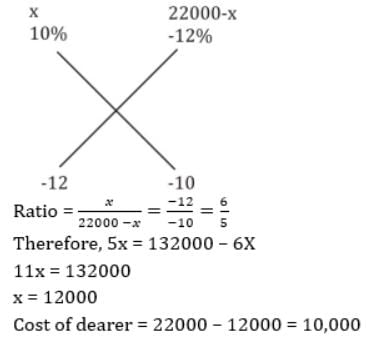
Which of the following teaching learning material will be at the top in cone of experience? - a)Models
- b)Film strip
- c)Black-boards
- d)Words.
Correct answer is option 'D'. Can you explain this answer?
Which of the following teaching learning material will be at the top in cone of experience?
a)
Models
b)
Film strip
c)
Black-boards
d)
Words.
|
|
Deepanshi Mishra answered |
By using words we can form and reform the sentences in many ways and teaching is also more effective by new words because students also want to learn something new
Answer the following questions by selecting the most appropriate option.Q. A good listener can ________. - a)correctly respond to every question asked.
- b)recognize how intonation is used
- c)pronounce each and every word correctly
- d)understand how to spell a word
Correct answer is option 'D'. Can you explain this answer?
Answer the following questions by selecting the most appropriate option.
Q. A good listener can ________.
a)
correctly respond to every question asked.
b)
recognize how intonation is used
c)
pronounce each and every word correctly
d)
understand how to spell a word

|
Focus Academy answered |
Importance of Being a Good Listener:
- Understanding Others: Being a good listener allows you to understand others' perspectives, thoughts, and feelings.
- Building Relationships: By actively listening to others, you can build stronger and more meaningful relationships.
- Resolving Conflicts: Listening attentively can help in resolving conflicts by understanding the root cause and finding common ground.
- Learning and Growing: Good listeners are more open to learning and growing as they are receptive to new ideas and feedback.
Qualities of a Good Listener:
- Patience: Good listeners are patient and allow others to express themselves without interruptions.
- Empathy: They show empathy towards others by understanding and sharing their emotions.
- Non-verbal Cues: Good listeners pay attention to non-verbal cues such as body language, tone of voice, and facial expressions.
- Asking Questions: They ask relevant questions to clarify and show interest in the conversation.
How to Improve Listening Skills:
- Practice Active Listening: Focus on the speaker, maintain eye contact, and avoid distractions.
- Reflective Listening: Repeat key points to show understanding and validate the speaker's feelings.
- Give Feedback: Provide feedback to show that you are actively engaged in the conversation.
- Be Open-Minded: Keep an open mind and avoid making assumptions or judgments while listening.
Use of model in Science teaching at primary level affects - a)Cognitive objectives
- b)Affective objectives
- c)Psychomotor objectives
- d)Both (B) and (C)
Correct answer is option 'A'. Can you explain this answer?
Use of model in Science teaching at primary level affects
a)
Cognitive objectives
b)
Affective objectives
c)
Psychomotor objectives
d)
Both (B) and (C)
|
|
Avlokit Maurya answered |
Yes.
The model used in science class will make students able to be efficient in understanding, problem solving, categorizing, memorization, etc. Thus it comes under cognitive domain.
Whereas affective and psychomotor domains are not affected here.
The model used in science class will make students able to be efficient in understanding, problem solving, categorizing, memorization, etc. Thus it comes under cognitive domain.
Whereas affective and psychomotor domains are not affected here.
Column II gives name of material use for device given in column I. Correctly match two columns.
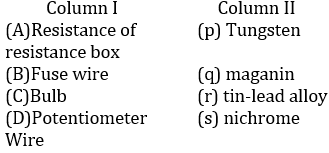
- a)(A)
 q, (B)
q, (B)  r, (C)
r, (C)  p, (D)
p, (D)  q
q - b)(A)
 r, (B)
r, (B)  p, (C)
p, (C)  r, (D)
r, (D)  q
q - c)(A)
 s, (B)
s, (B)  q, (C)
q, (C)  r, (D)
r, (D)  p
p - d)(A)
 p, (B)
p, (B)  s, (C)
s, (C)  r, (D)
r, (D)  q
q
Correct answer is option 'A'. Can you explain this answer?
Column II gives name of material use for device given in column I. Correctly match two columns.


a)
(A)  q, (B)
q, (B)  r, (C)
r, (C)  p, (D)
p, (D)  q
q
 q, (B)
q, (B)  r, (C)
r, (C)  p, (D)
p, (D)  q
q b)
(A)  r, (B)
r, (B)  p, (C)
p, (C)  r, (D)
r, (D)  q
q
 r, (B)
r, (B)  p, (C)
p, (C)  r, (D)
r, (D)  q
q c)
(A)  s, (B)
s, (B)  q, (C)
q, (C)  r, (D)
r, (D)  p
p
 s, (B)
s, (B)  q, (C)
q, (C)  r, (D)
r, (D)  p
p d)
(A)  p, (B)
p, (B)  s, (C)
s, (C)  r, (D)
r, (D)  q
q
 p, (B)
p, (B)  s, (C)
s, (C)  r, (D)
r, (D)  q
q

|
Kunami Hansda answered |
Correct answer is option 'A'
becose
• resistance of resistance box is made up of nichrome.
• fuse wire is made up of tin - lead alloy.
• bulb is made up of tungsten.
• potentiometer wire is made up of maganin.
I hope it helps you :)
becose
• resistance of resistance box is made up of nichrome.
• fuse wire is made up of tin - lead alloy.
• bulb is made up of tungsten.
• potentiometer wire is made up of maganin.
I hope it helps you :)
Who said, “Intelligence is essentially the perception of relations, especially the perception of difficult or subtle relations”? - a)Guilford
- b)Spearman
- c)Hine
- d)Wechsler.
Correct answer is option 'B'. Can you explain this answer?
Who said, “Intelligence is essentially the perception of relations, especially the perception of difficult or subtle relations”?
a)
Guilford
b)
Spearman
c)
Hine
d)
Wechsler.
|
|
Sparsh Iyer answered |
"I have a dream"?
Dr. Martin Luther King Jr. said this during his famous speech at the March on Washington for Jobs and Freedom on August 28, 1963.
Dr. Martin Luther King Jr. said this during his famous speech at the March on Washington for Jobs and Freedom on August 28, 1963.
In an election between two candidates one got 55% of the total valid votes. 20% of the votes were invalid. If the total votes are 7500 what is the number of valid votes other person got? - a)2000
- b)2500
- c)2700
- d)None of these
Correct answer is option 'C'. Can you explain this answer?
In an election between two candidates one got 55% of the total valid votes. 20% of the votes were invalid. If the total votes are 7500 what is the number of valid votes other person got?
a)
2000
b)
2500
c)
2700
d)
None of these
|
|
Isha Chauhan answered |

The product of learning maturation is - a)Development and growth
- b)Development
- c)Intelligence
- d)None of these
Correct answer is option 'C'. Can you explain this answer?
The product of learning maturation is
a)
Development and growth
b)
Development
c)
Intelligence
d)
None of these

|
Skyhigh Academy answered |
- The correct answer is C: Development.
- Development refers to the process of growth and change that occurs throughout life, combining both learning and maturation.
- Learning involves acquiring new skills or knowledge through experience, education, or training.
- Maturation is the natural biological growth process, leading to physical and mental changes.
- Together, learning and maturation contribute to development, encompassing physical, cognitive, and emotional changes over time.
- Development refers to the process of growth and change that occurs throughout life, combining both learning and maturation.
- Learning involves acquiring new skills or knowledge through experience, education, or training.
- Maturation is the natural biological growth process, leading to physical and mental changes.
- Together, learning and maturation contribute to development, encompassing physical, cognitive, and emotional changes over time.
Answer the following questions by selecting the most appropriate option.Q. A phoneme is a ________. - a)technique to improve pronunciation
- b)single sound unit
- c)sound pattern
- d)lexical item
Correct answer is option 'D'. Can you explain this answer?
Answer the following questions by selecting the most appropriate option.
Q. A phoneme is a ________.
a)
technique to improve pronunciation
b)
single sound unit
c)
sound pattern
d)
lexical item
|
|
Kaavya Patel answered |
Definition of a Phoneme:
A phoneme is a fundamental concept in linguistics and phonetics. It refers to the smallest unit of sound in a language that can distinguish words from each other. Phonemes are represented by symbols and are essential in understanding the sound structure of a language.
Explanation of the Correct Answer:
Lexical Item:
In the context of phonetics, a phoneme is not a technique to improve pronunciation, a sound pattern, or a single sound unit. Instead, it is considered a lexical item. Lexical items are words or phrases that convey meaning and are part of the vocabulary of a language. Phonemes, as lexical items, play a crucial role in differentiating words and conveying distinct meanings in spoken language.
Role of Phonemes:
Phonemes are the building blocks of language and are used to form words. They are combined in various ways to create meaningful units of speech. For example, in English, the phonemes /b/ and /æ/ combine to form the word "bat." Changing one phoneme in a word can alter its meaning entirely, highlighting the importance of phonemes in language.
Significance in Linguistics:
Understanding phonemes is essential in linguistic analysis, as they help researchers study the sound patterns of languages. By identifying and categorizing phonemes, linguists can analyze pronunciation variations, dialects, and language acquisition processes. Phonemes serve as a basis for phonological studies and contribute to our understanding of how sounds function in language.
In conclusion, a phoneme is more than just a single sound unit; it is a fundamental element of language that contributes to the richness and diversity of linguistic systems. Its classification as a lexical item underscores its significance in shaping the structure and meaning of spoken language.
A phoneme is a fundamental concept in linguistics and phonetics. It refers to the smallest unit of sound in a language that can distinguish words from each other. Phonemes are represented by symbols and are essential in understanding the sound structure of a language.
Explanation of the Correct Answer:
Lexical Item:
In the context of phonetics, a phoneme is not a technique to improve pronunciation, a sound pattern, or a single sound unit. Instead, it is considered a lexical item. Lexical items are words or phrases that convey meaning and are part of the vocabulary of a language. Phonemes, as lexical items, play a crucial role in differentiating words and conveying distinct meanings in spoken language.
Role of Phonemes:
Phonemes are the building blocks of language and are used to form words. They are combined in various ways to create meaningful units of speech. For example, in English, the phonemes /b/ and /æ/ combine to form the word "bat." Changing one phoneme in a word can alter its meaning entirely, highlighting the importance of phonemes in language.
Significance in Linguistics:
Understanding phonemes is essential in linguistic analysis, as they help researchers study the sound patterns of languages. By identifying and categorizing phonemes, linguists can analyze pronunciation variations, dialects, and language acquisition processes. Phonemes serve as a basis for phonological studies and contribute to our understanding of how sounds function in language.
In conclusion, a phoneme is more than just a single sound unit; it is a fundamental element of language that contributes to the richness and diversity of linguistic systems. Its classification as a lexical item underscores its significance in shaping the structure and meaning of spoken language.
Scientist I. kant had developed - a)question based method
- b)Impression method
- c)rule method
- d)None of them
Correct answer is option 'C'. Can you explain this answer?
Scientist I. kant had developed
a)
question based method
b)
Impression method
c)
rule method
d)
None of them
|
|
Varun Majumdar answered |
Rule Method Developed by I. Kant
Introduction:
Immanuel Kant was a German philosopher who was born in 1724 and died in 1804. He is considered one of the most important figures in modern philosophy and is famous for his work in metaphysics, ethics, and epistemology. Kant's philosophy is characterized by his emphasis on reason and his belief in the importance of rules and principles. In this context, Kant had developed the rule method.
Rule Method:
The rule method is a method of inquiry that Kant developed. It is based on the idea that knowledge can be acquired through the use of rules and principles. The rule method involves breaking a problem or question down into its component parts, and then applying rules and principles to each part in order to arrive at a solution or answer.
Advantages of Rule Method:
The rule method has several advantages over other methods of inquiry. One advantage is that it is very systematic and logical. By breaking a problem down into its component parts and applying rules and principles to each part, the rule method ensures that all aspects of the problem are considered and that the solution or answer is based on a rigorous and thorough analysis.
Another advantage of the rule method is that it is very versatile. It can be used to analyze and solve problems in a wide variety of fields, including science, mathematics, philosophy, and law. The rule method is also very adaptable to different situations and circumstances. It can be used to analyze complex problems or simple ones, and it can be used by individuals or groups.
Conclusion:
In conclusion, the rule method developed by Immanuel Kant is a powerful tool for analyzing and solving problems. It is based on the idea that knowledge can be acquired through the use of rules and principles, and it involves breaking a problem down into its component parts and applying rules and principles to each part in order to arrive at a solution or answer. The rule method is systematic, logical, versatile, and adaptable, and it can be used to analyze and solve problems in a wide variety of fields.
Introduction:
Immanuel Kant was a German philosopher who was born in 1724 and died in 1804. He is considered one of the most important figures in modern philosophy and is famous for his work in metaphysics, ethics, and epistemology. Kant's philosophy is characterized by his emphasis on reason and his belief in the importance of rules and principles. In this context, Kant had developed the rule method.
Rule Method:
The rule method is a method of inquiry that Kant developed. It is based on the idea that knowledge can be acquired through the use of rules and principles. The rule method involves breaking a problem or question down into its component parts, and then applying rules and principles to each part in order to arrive at a solution or answer.
Advantages of Rule Method:
The rule method has several advantages over other methods of inquiry. One advantage is that it is very systematic and logical. By breaking a problem down into its component parts and applying rules and principles to each part, the rule method ensures that all aspects of the problem are considered and that the solution or answer is based on a rigorous and thorough analysis.
Another advantage of the rule method is that it is very versatile. It can be used to analyze and solve problems in a wide variety of fields, including science, mathematics, philosophy, and law. The rule method is also very adaptable to different situations and circumstances. It can be used to analyze complex problems or simple ones, and it can be used by individuals or groups.
Conclusion:
In conclusion, the rule method developed by Immanuel Kant is a powerful tool for analyzing and solving problems. It is based on the idea that knowledge can be acquired through the use of rules and principles, and it involves breaking a problem down into its component parts and applying rules and principles to each part in order to arrive at a solution or answer. The rule method is systematic, logical, versatile, and adaptable, and it can be used to analyze and solve problems in a wide variety of fields.
बालक के व्यवहार के भावात्मक पक्ष को प्रबल बनाया जा सकता है- - a)गद्य साहित्य के अध्ययन से
- b)पद्य साहित्य के अध्ययन से
- c)गीत साहित्य के अध्ययन से
- d)उपर्युक्त सभी।
Correct answer is option 'D'. Can you explain this answer?
बालक के व्यवहार के भावात्मक पक्ष को प्रबल बनाया जा सकता है-
a)
गद्य साहित्य के अध्ययन से
b)
पद्य साहित्य के अध्ययन से
c)
गीत साहित्य के अध्ययन से
d)
उपर्युक्त सभी।

|
Focus Academy answered |
Explanation:
- Identify the given words: The question provides a series of words in Devanagari script.
- Match the words: Match the given series of words with the correct word in Devanagari script.
- Choose the correct answer: Based on the match, select the correct option that corresponds to the given words.
- Answer: The correct answer is option D: उपर्युक्त सभी।
Answer the following questions by selecting the most appropriate option.Q. Problems of spelling errors of the students can be easily solved through ________. - a)dictionary
- b)textbooks
- c)dictation
- d)teaching aids
Correct answer is option 'B'. Can you explain this answer?
Answer the following questions by selecting the most appropriate option.
Q. Problems of spelling errors of the students can be easily solved through ________.
a)
dictionary
b)
textbooks
c)
dictation
d)
teaching aids

|
Aspire Academy answered |
- Use of Dictionary: Encourage students to use a dictionary to look up correct spellings of words they are unsure about. This will help them learn the correct spellings and increase their vocabulary.
- Dictation Exercises: Regular dictation exercises can help students practice spelling words correctly. This will also help them improve their listening skills.
- Spelling Tests: Conduct regular spelling tests to assess students' progress and identify areas where they need improvement.
- Feedback: Provide constructive feedback on students' spelling errors and encourage them to pay attention to spelling in their written work.
- Teaching Aids: Use teaching aids such as flashcards, word games, and interactive activities to make learning spelling fun and engaging for students.
By implementing these strategies, teachers can help students overcome spelling errors and improve their overall language skills.
Magnetic lines do not intersect one-another because - a)they are at a distance
- b)they are in the same direction
- c)they are parallel to another
- d)at the point of intersection there will be two direction of the magnetic force which is impossible
Correct answer is option 'D'. Can you explain this answer?
Magnetic lines do not intersect one-another because
a)
they are at a distance
b)
they are in the same direction
c)
they are parallel to another
d)
at the point of intersection there will be two direction of the magnetic force which is impossible
|
|
Harshitha Bajaj answered |
Explanation:
Magnetic lines, also known as magnetic field lines or magnetic flux lines, are used to represent the direction and strength of the magnetic field surrounding a magnet or a current-carrying wire. These lines are continuous closed loops that form a pattern around the magnetic source.
Why Magnetic Lines Do Not Intersect:
The reason magnetic lines do not intersect one another is because at the point of intersection, there would be two different directions of the magnetic force, which is not possible. Let's explore this further:
1. Magnetic Force:
- Magnetic field lines represent the direction of the magnetic force at any point in space.
- The magnetic force experienced by a charged particle or a magnetic material is always tangential to the magnetic field line at that point.
- If two magnetic field lines were to intersect, it would imply that at the point of intersection, a charged particle or magnetic material would experience two different directions of magnetic force simultaneously, which is not physically possible.
2. Superposition Principle:
- The superposition principle states that the net magnetic field at any point in space is the vector sum of the individual magnetic fields produced by all the magnetic sources.
- If two magnetic field lines were to intersect, it would imply that the magnetic field at the point of intersection is the vector sum of the magnetic fields from the two intersecting field lines.
- However, this violates the superposition principle because the resultant magnetic field cannot have two different directions at the same point.
3. Conservation of Energy:
- If magnetic field lines were to intersect, it would imply that the same point in space could have different magnitudes and directions of magnetic field.
- This would violate the principle of conservation of energy because energy could be gained or lost at the point of intersection due to the different magnetic field strengths and directions.
In Conclusion:
Magnetic lines do not intersect because at the point of intersection, there would be two different directions of the magnetic force, which is not physically possible. This is due to the nature of magnetic fields and their representation by magnetic field lines. The non-intersecting nature of magnetic field lines ensures the consistency of the magnetic force and the principles of superposition and conservation of energy.
Magnetic lines, also known as magnetic field lines or magnetic flux lines, are used to represent the direction and strength of the magnetic field surrounding a magnet or a current-carrying wire. These lines are continuous closed loops that form a pattern around the magnetic source.
Why Magnetic Lines Do Not Intersect:
The reason magnetic lines do not intersect one another is because at the point of intersection, there would be two different directions of the magnetic force, which is not possible. Let's explore this further:
1. Magnetic Force:
- Magnetic field lines represent the direction of the magnetic force at any point in space.
- The magnetic force experienced by a charged particle or a magnetic material is always tangential to the magnetic field line at that point.
- If two magnetic field lines were to intersect, it would imply that at the point of intersection, a charged particle or magnetic material would experience two different directions of magnetic force simultaneously, which is not physically possible.
2. Superposition Principle:
- The superposition principle states that the net magnetic field at any point in space is the vector sum of the individual magnetic fields produced by all the magnetic sources.
- If two magnetic field lines were to intersect, it would imply that the magnetic field at the point of intersection is the vector sum of the magnetic fields from the two intersecting field lines.
- However, this violates the superposition principle because the resultant magnetic field cannot have two different directions at the same point.
3. Conservation of Energy:
- If magnetic field lines were to intersect, it would imply that the same point in space could have different magnitudes and directions of magnetic field.
- This would violate the principle of conservation of energy because energy could be gained or lost at the point of intersection due to the different magnetic field strengths and directions.
In Conclusion:
Magnetic lines do not intersect because at the point of intersection, there would be two different directions of the magnetic force, which is not physically possible. This is due to the nature of magnetic fields and their representation by magnetic field lines. The non-intersecting nature of magnetic field lines ensures the consistency of the magnetic force and the principles of superposition and conservation of energy.
Chapter doubts & questions for CTET Full Length Practice Test Paper 2 (Mathematics and Science) - CTET (Central Teacher Eligibility Test) Mock Test Series 2025 2025 is part of CTET & State TET exam preparation. The chapters have been prepared according to the CTET & State TET exam syllabus. The Chapter doubts & questions, notes, tests & MCQs are made for CTET & State TET 2025 Exam. Find important definitions, questions, notes, meanings, examples, exercises, MCQs and online tests here.
Chapter doubts & questions of CTET Full Length Practice Test Paper 2 (Mathematics and Science) - CTET (Central Teacher Eligibility Test) Mock Test Series 2025 in English & Hindi are available as part of CTET & State TET exam.
Download more important topics, notes, lectures and mock test series for CTET & State TET Exam by signing up for free.

Contact Support
Our team is online on weekdays between 10 AM - 7 PM
Typical reply within 3 hours
|
Free Exam Preparation
at your Fingertips!
Access Free Study Material - Test Series, Structured Courses, Free Videos & Study Notes and Prepare for Your Exam With Ease

 Join the 10M+ students on EduRev
Join the 10M+ students on EduRev
|

|
Create your account for free
OR
Forgot Password
OR
Signup on EduRev and stay on top of your study goals
10M+ students crushing their study goals daily


